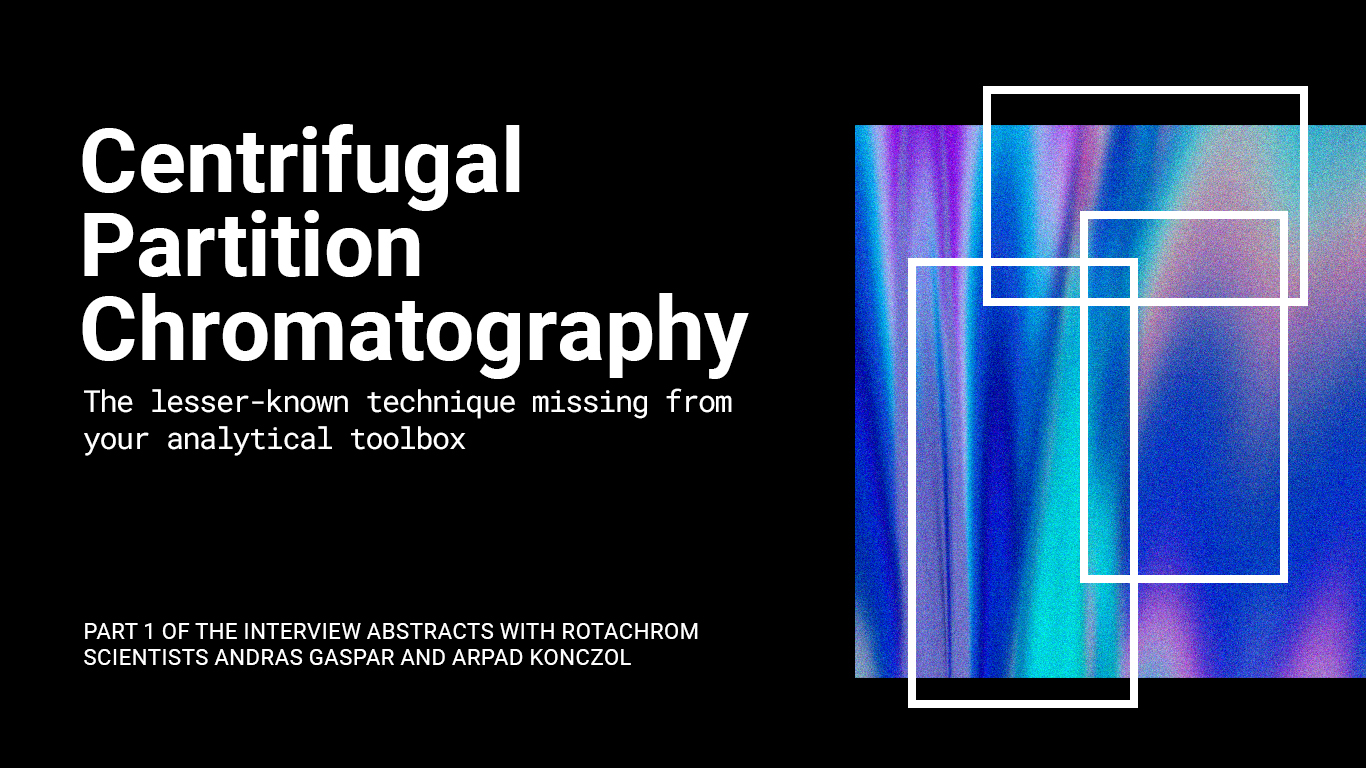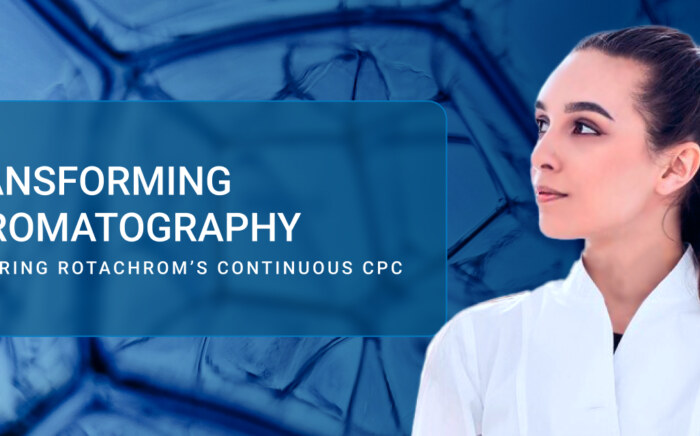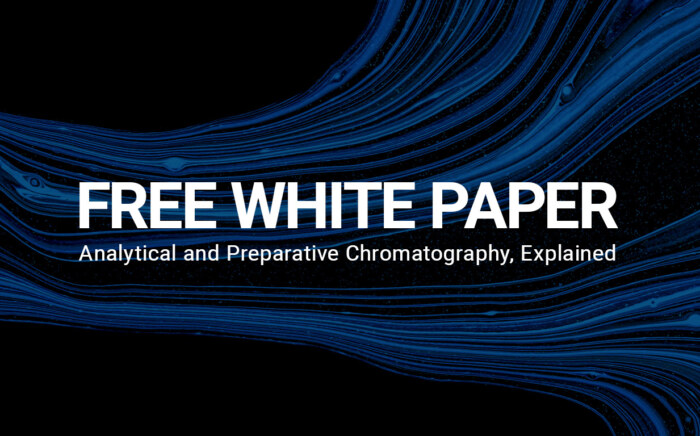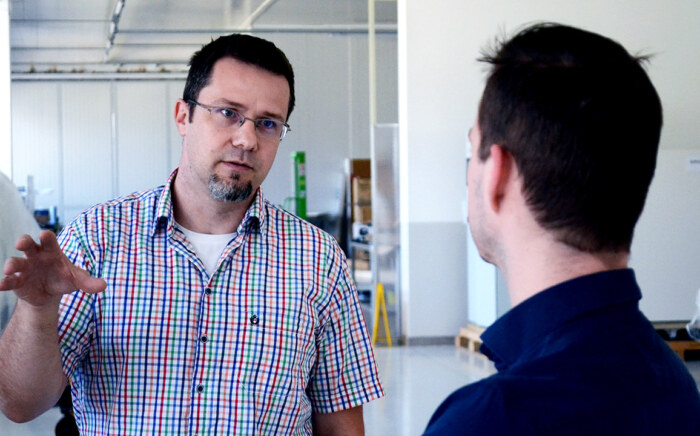Increasing separation efficiency by pH adjustment in Centrifugal Partition Chromatography
NewsCentrifugal partition chromatography is a powerful yet underutilized separation technique that can save costs and increase scalability in your lab. Despite the popularity of HPLC-based methods, these techniques may not be as efficient when scaling up or out for commercial production. Centrifugal partition chromatography offers a resource-efficient and easy-to-use alternative that can help you reach your objectives. This technique is often referred to as the “underdog” of separation methods, but it deserves a place in your lab.
Don’t Overlook CPC, The Reliable Separation Method for Your Lab
“CPC is a relatively old technology. However, it remains under-used among separation scientists,” says Dr. András Gáspár, Chief Product Officer at RotaChrom. “We are working on creating awareness for this technology because we truly believe it has the potential to complement traditional separation techniques.”
Centrifugal partition chromatography (CPC) is a liquid-liquid chromatography method that uses the principles of partitioning to separate analytes based on their differing partition coefficients in the two-liquid system. The stationary liquid phase is retained in the rotor by centrifugal forces, while the mobile phase containing the analytes is fed under pressure into the stationary phase.
Advantages of CPC and Liquid-Liquid Chromatography
CPC is commonly used as a pre-treatment step to purify or prepare samples before they are further analyzed using traditional chromatography methods, which provide higher resolution of separation. This approach allows for processing of bulk samples in a faster and more cost-effective manner, as CPC is less expensive and less prone to breakdowns under high-throughput pressure, as compared to high-cost HPLC platforms.
One of the main advantages of CPC is its liquid-liquid nature, providing a large stationary phase ratio compared to other solid-support technologies. This aspect gives CPC a high “holdability” of analytes, high capacity for separation, and robustness of operation, as explained by Dr. Árpád Könczöl, Lead Scientific Officer at RotaChrom.
“Additionally, the mechanism of separation is really simple,” Könczöl continues. “It’s based on the partition behavior of the compounds in the mixture. So, we’re able to use the retention volume equation to precisely predict the chromatogram even before separation. This predictability of CPC makes scaling or transferring the method much easier.”
Flexibility and a Wide-Range of Applications
CPC offers a high level of solvent flexibility, which can help reduce operational costs in industrial applications. “CPC allows for the use of a wide range of solvents and offers a greater chemical space to adjust solvent selectivity compared to other chromatography technologies,” said Gáspár. “This kind of flexibility is not commonly found in column chromatography and can be costly in terms of consumables. Using CPC for downstream separation can be a more cost-effective solution, especially when a team is focused on a high-value target.”
CPC has a wide range of applications, including the separation of small-molecule drug compounds, natural products, medicinal chemistry workflows, fermentation-based biotechs, and extracts for the food and beverage sector, among others in the pharmaceutical industry.
RotaChrom has innovated in the field of preparative purification with their Industrial-Scale Centrifugal Partition Chromatography method. This technology diverges from traditional methods that utilize a solid stationary phase, instead adopting a unique approach for precise molecular separation. The outcome is a system that boasts higher yield and purity, lower costs, and streamlined downstream method development for a wide array of purification needs.
Our solution can be applied in numerous industries, including pharmaceuticals, food and beverage, natural extracts, cosmetics, and fragrances. The CPC system offered by RotaChrom is highly versatile, capable of handling everything from small molecule APIs to macromolecules, and from hydrophobic lipids to completely hydrophilic peptides, all on the same instrument.
To learn more about how you can put CPC to use in your purification process, visit RotaChrom’s application library for real-life examples.



